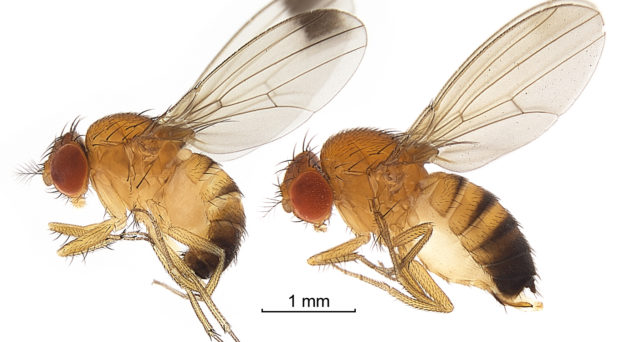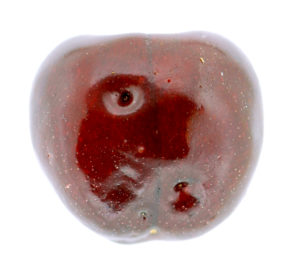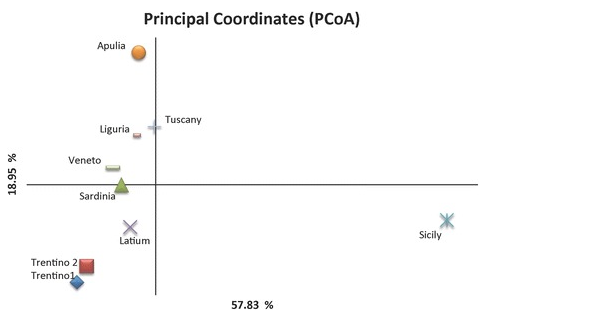
Winter is here, Christmas is around the corner, but summer will be back before long, and with it fruit salads, smoothies and in the UK, Pimms.
But a little-known invader is wreaking havoc with fruit stocks worldwide, thanks to pest migration, largely aided by global trade.
Wherever this tiny terror has gone, economically-significant fruit damage has resulted.
Where invasive species go, environmental and economic damage swiftly follow. Even the seemingly innocuous fruit fly can have a substantial impact, and it is one particular species, Drosophila suzukii, which is the focus of recently-published article in BMC Genetics.
First recorded in Japan, these flies have gone global, invading the USA, Europe, and Iran. Wherever this tiny terror has gone, economically-significant fruit damage has resulted.
suzukii lives on berries; female flies pierce the fruit and lay eggs, and their larvae eat the fruit from the inside out, leaving it unmarketable and costing millions in lost income and pest management expenses worldwide.
This loss is passed on to consumers in the form of higher prices, potentially affecting public health as fruit prices increase.
Each growing season can see 13 generations of D. suzukii alive at once, giving plenty of opportunity to develop pesticide resistance, requiring increasingly-strong concentrations and combinations of pesticides, which can be environmentally detrimental.

Italy is one of the major contributors to fruit production in Europe, and has been materially affected by this invasive species. The estimated economic impact in Trento alone could be over 1.5 million euros per annum, even with a pest-management strategy.
Fortunately, a number of solutions are available. The most well-established of these include the Sterile Insect Technique (SIT) (in which sterile males are introduced into the breeding population to reduce numbers), and genetic elimination methods such as introducing dominant lethal-carrying insects into a population (RIDL).
Both are most effective when the genetic structure of the target population is known. Population genetics allow researchers to reconstruct invasion routes, and determine how related populations of a species are. Gabrielle Tait and colleagues used this approach to characterise 9 populations of D. suzukii in Italy.
Between October 2015 and April 2016, the authors caught 278 D. suzukii flies in 9 areas of Italy, aiming to determine the genetic differentiation between each population to understand gene flow of the species in a newly-colonised environment. Their study represents the first attempt to investigate the pattern of genetic variability in this species in Italy.

Fifteen previously-determined single sequence repeat (SSR) markers (short, repeated sequence of DNA that are useful for measuring relatedness within and between species, populations, and individuals) were used to determine the genetic variability between the populations.
Analyses of the molecular variance between the tested populations revealed that there was little total variation between populations of D. suzukii in Italy. A principal coordinate analysis (PCoA) of the 9 populations determined that the Sicilian population was genetically isolated compared to the rest, though they had the same origin as the other populations.

FST values (the summary statistic of population differentiation) confirmed that the Sicilian population was genetically different compared to the rest. Population structure analysis determined that genetic differentiation between most populations was moderate, indicating admixture between them. This was not true of the Sicilian flies, which were the most differentiated from the other groups, possibly indicating that the Sicilian populations did not migrate significantly to other areas.
A principal coordinate analysis of the 9 populations determined that the Sicilian population was genetically isolated compared to the rest.
Interestingly, flies migrated from Apulia to other regions, but not to Apulia from other regions. Besides Sicily and Apulia, migration rates were similar in both directions between all locations.
Within the populations, genetic diversity, as analysed by heterozygosity, was high overall, even further away from the likely spreading centre of the species in Livorno.
Generally, when there is a ‘source’ or ‘founder’ population, from which other populations derive and migrate, there is a decrease in genetic diversity as the migrating populations move away from the source.
The lack of decline in heterozygosity when moving geographically away from the Livorno population, and the high migration between locations indicates D. suzukii moves with ease around most of Italy, likely facilitated by human transport.
The authors suggest that the lack of gene flow from Sicily to other regions can be explained by human intervention – Sicilian fruit is transported to the rest of Italy during the cold season, when Sicily still sees moderate temperatures ideal for fruit growing. Sicilian D. suzukii taken to Italy in the process do not find ideal conditions on arrival.
Pest control mechanisms like SIT and RIDL depend upon this information. Heterozygosity is a good measure of how randomly mating happens in a population, so, broadly, if there is higher heterozygosity, there is less inbreeding and population isolation, and these techniques should be more effective.
This research has also determined the highest and lowest ‘traffic’ areas for population migration of D. suzukii across Italy, information that can be used to inform management practices, like increased monitoring in high-risk areas, increased control procedures in inspecting and transporting fruit, and the introduction of modified males (SIT or RIDL) early in the season to control the populations in these areas.
This could be great news for fruit growers; not so much for fruit flies.
Comments